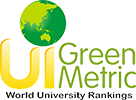
A review of medical plant of Middle East and North Africa (MENA) region as source in tuberculosis drug discovery
Abstract:Tuberculosis (TB) is a disease that affects one-third of the world’s population. Although currently available TB drugs have many side effects, such as nausea, headache and gastrointestinal discomfort, no new anti-TB drugs have been produced in the past 30 years. Therefore, the discovery of a new anti-TB agent with minimal or no side effects is urgently needed. Many previous works have reported the effects of medicinal plants against Mycobacterium tuberculosis (MTB). However, none have focused on medicinal plants from the Middle Eastern and North African (MENA) region. This review highlights the effects of medicinal plants from the MENA region on TB. Medicinal plants from the MENA region have been successfully used as traditional medicine and first aid against TB related problems. A total of 184 plants species representing 73 families were studied. Amongst these species, 93 species contained more active compounds with strong anti-MTB activity (crude extracts and/or bioactive compounds with activities of 0-100 µg/ml). The extract of Inula helenium, Khaya senegalensis, Premna odorata and Rosmarinus officinalis presented the strongest anti-MTB activity. In addition, Boswellia papyrifera (Del) Hochst olibanum, Eucalyptus camaldulensis Dehnh leaves (river red gum), Nigella sativa (black cumin) seeds and genus Cymbopogon exhibited anti-TB activity. The most potent bioactive compounds included alantolactone, octyl acetate, 1,8-cineole, thymoquinone, piperitone, α- verbenol, citral b and α-pinene. These compounds affect the permeability of microbial plasma membranes, thus kill the mycobacterium spp. As a conclusion, plant species collected from the MENA region are potential sources of novel drugs against TB.







